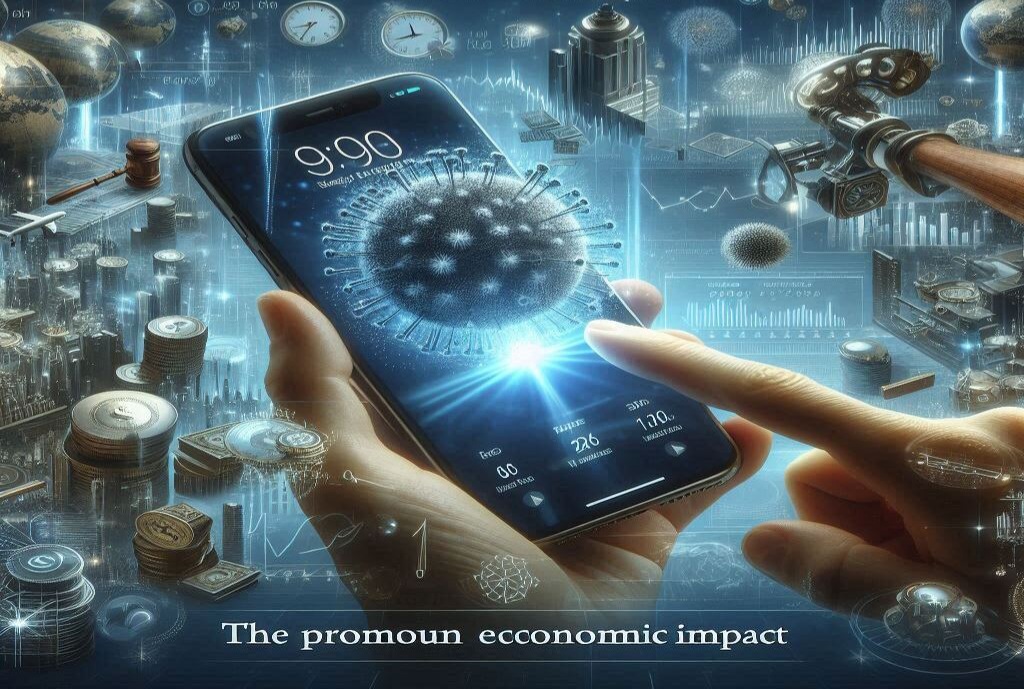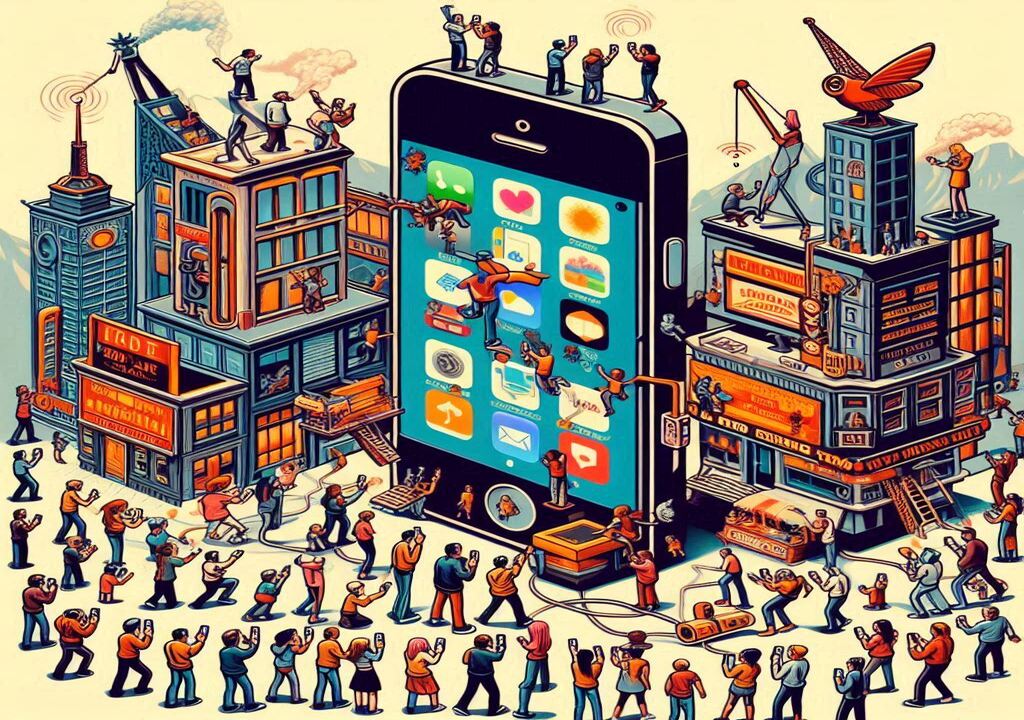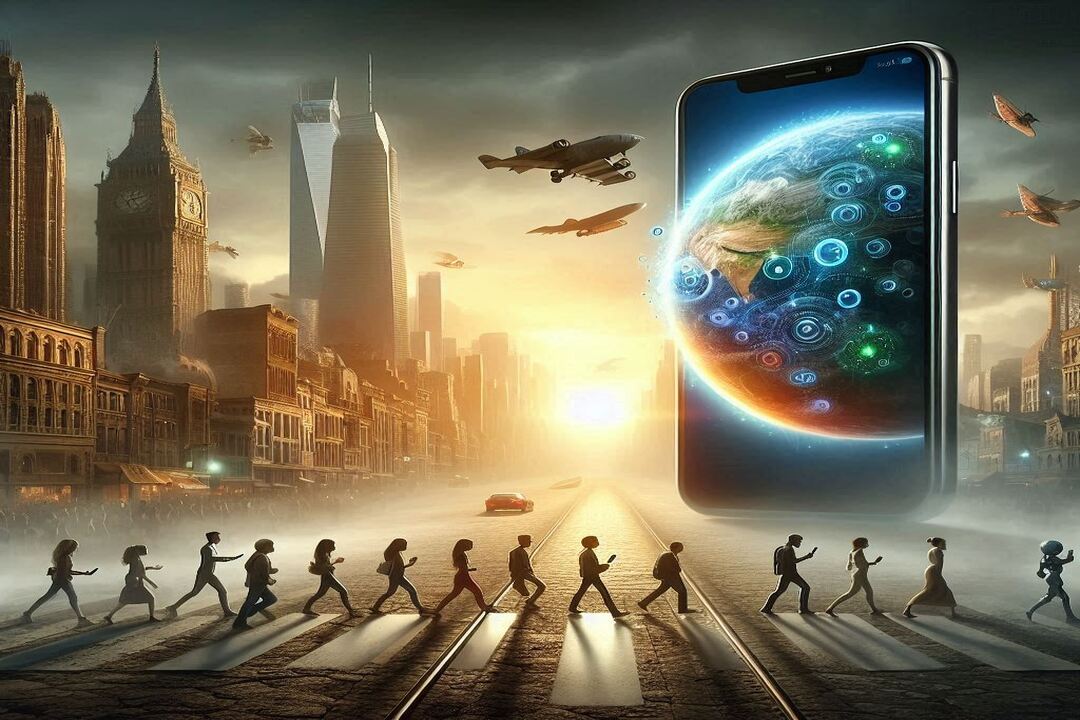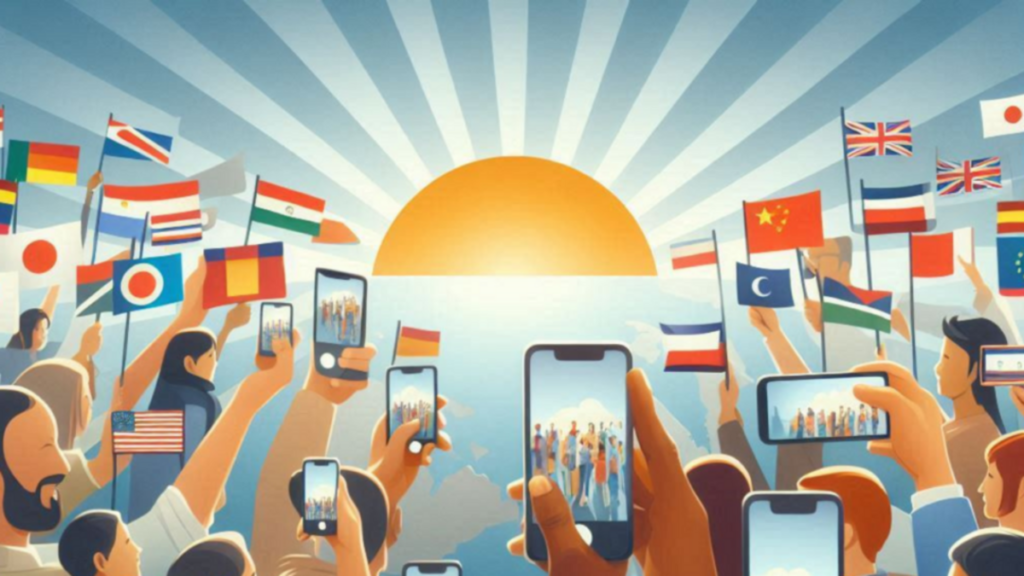The first iPhone, released in 2007, marked a significant leap in mobile technology. It combined several functionalities into a single device, including a phone, an iPod, and an internet communicator. This convergence of technologies paved the way for the modern smartphone era.
- Touchscreen Interface: The iPhone’s capacitive touchscreen was revolutionary, replacing the physical keyboards found on most phones at the time. This innovation set a new standard for mobile devices.
- User Interface (UI):Introduced a highly intuitive and user-friendly interface. Gestures like pinch-to-zoom and swiping became standard in mobile device design.
- Software Integration: Seamlessly integrated hardware and software, providing a smooth user experience. iOS, Apple’s mobile operating system, was designed to be intuitive and easy to use, making smartphones accessible to a broader audience.
Communication Revolution

Transformed how people communicate by integrating various communication tools into one device.
- Text and Voice Messaging: With the iPhone, users could send text messages, multimedia messages (MMS), and emails from a single device.
- Internet Access: Provided easy access to the internet, enabling users to browse websites, use social media, and access online services on the go.
- Video Calls: Later iterations introduced FaceTime, which popularized video calling and made it a standard feature on smartphones.
Economic Impact

The release of profound economic impact.
- App Economy: The introduction of the App Store in 2008 created a new economy. Developers could create and sell apps directly to consumers, leading to an explosion of innovation and the creation of new businesses and job opportunities.
- Apple’s Market Value: The success of the Apple into one of the most valuable companies in the world. It became a significant revenue driver for the company, contributing billions of dollars in sales.
- Boost to Related Industries: The popularity boosted related industries, such as mobile accessories, telecommunications, and component manufacturing.
Social and Cultural Impact

Influenced social interactions and cultural norms.
- Social Media: The ease of accessing social media platforms on the iPhone accelerated the growth of these platforms. People began sharing more of their lives online, and social media became an integral part of daily life.
- Photography: Built-in camera made high-quality photography accessible to everyone. This democratization of photography changed how people capture and share memories.
- Mobile Entertainment: Made it easy to access music, videos, and games, transforming how people consume entertainment. The iTunes Store and later Apple Music and Apple TV+ provided vast libraries of content at users’ fingertips.
Changes in Consumer Behavior

Changed how consumers interact with technology and make purchasing decisions.
- Mobile Shopping: With the ability to browse the internet and use shopping apps, the iPhone contributed to the rise of mobile commerce. Consumers began shopping online more frequently, leading to the growth of e-commerce.
- Instant Information: The iPhone provided instant access to information, changing how people seek and consume information. The ease of searching the web and using apps for news, weather, and more became a part of everyday life.
- Health and Fitness: With the introduction of health and fitness apps, the iPhone encouraged users to monitor and improve their health. Apps for tracking workouts, diets, and medical information became popular.
Impact on Other Industries

The influence extended beyond the tech industry.
- Advertising: Mobile advertising became a significant market. Companies started to develop mobile-friendly websites and ads, targeting users directly through their smartphones.
- Healthcare: The iPhone’s app ecosystem led to the development of numerous health-related applications, facilitating telemedicine, fitness tracking, and health monitoring.
- Education: Educational apps and tools became widespread, making learning more accessible. The iPhone enabled mobile learning, with apps for studying, language learning, and more.
Global Influence

The iPhone had a worldwide impact, influencing various regions differently.
- Developed Markets: In developed markets, the iPhone quickly became a status symbol and a ubiquitous part of daily life. It influenced consumer preferences and set high expectations for mobile devices.
- Developing Markets: In developing markets, the iPhone often represented aspiration and modernity. While its high cost limited immediate widespread adoption, it set the stage for other affordable smartphones to enter these markets, bridging the digital divide.
- Global Standards: The iPhone set new standards for mobile technology and design, influencing competitors worldwide. It drove the global smartphone market towards higher quality and more feature-rich devices.
Long-Term Implications

The first iPhone’s legacy continues to shape the future of technology and society.
- Continuous Innovation: Apple’s focus on innovation has continued, with each new iPhone iteration bringing advancements in technology, such as better cameras, faster processors, and new features like augmented reality.
- Environmental Impact: The widespread adoption of smartphones has raised concerns about electronic waste and sustainability. Apple has made efforts to address these issues with recycling programs and commitments to using more sustainable materials.
- Privacy and Security: The iPhone has influenced discussions on privacy and security, with Apple positioning itself as a defender of user privacy. Features like encryption and privacy-focused updates reflect this commitment.
The iPhone has affected the world for several key reasons:
- Innovative Design: The iPhone introduced a sleek, intuitive design that set a new standard for smartphones. Its multi-touch interface and minimalistic aesthetic were groundbreaking, influencing the design of countless other devices.
- User-Friendly Interface: Apple prioritized a user-friendly experience with iOS, making the smartphone accessible to a wide audience. This ease of use helped drive widespread adoption across different demographics.
- App Ecosystem: The introduction of the App Store in 2008 created a vibrant ecosystem for developers, leading to an explosion of mobile applications. This has not only generated significant revenue but also transformed how people interact with their devices, perform tasks, and access services.
- Integration of Features: Combined various technologies—phone, music player, internet browser, camera—into one device. This convergence simplified users’ lives and set a precedent for future mobile devices.
- Regular Updates and Support: Apple’s commitment to regular software updates and long-term support for older devices has ensured that users benefit from new features and security enhancements, prolonging the lifecycle of their devices.
- Cultural Impact: The cultural icon, influencing lifestyle and societal norms. It has popularized mobile photography, social media usage, and mobile gaming, and it has changed how people communicate and consume media.
- Economic Impact: The success of the iPhone has had substantial economic implications, creating a massive market for mobile technology, driving innovation in related industries, and contributing significantly to Apple’s financial success, making it one of the most valuable companies globally.
- Global Reach: The iPhone’s global availability has brought advanced technology to a wide audience, impacting economies and societies around the world. It has set industry standards and prompted competitors to innovate, fostering a highly competitive and dynamic tech industry.
FAQ
- What was revolutionary about the first iPhone?
- The first iPhone introduced a multi-touch capacitive touchscreen, a user-friendly interface, and integrated multiple functions (phone, music player, internet browser) into one device.
- How did the iPhone change the smartphone industry?
- New standards for design and functionality, leading other manufacturers to adopt similar features and spurring innovation across the industry.
- What impact did the iPhone have on communication?
- It revolutionized communication by making text messaging, email, internet access, and later, video calls, easily accessible from a single device.
- How did the App Store influence the mobile market?
- The App Store created a new economy for mobile applications, leading to an explosion of innovation and the creation of new businesses and job opportunities.
- In what ways did the iPhone affect consumer behavior?
- It changed how people shop, access information, and consume entertainment, making mobile commerce and instant information a part of everyday life.
- What economic impact did the iPhone have?
- Significantly contributed to Apple’s revenue, turned it into one of the most valuable companies, and boosted related industries like mobile accessories and telecommunications.
- How did the iPhone influence social media usage?
- Ease of use and internet connectivity accelerated the growth of social media platforms, making them integral to daily communication and social interaction.
- What changes did the iPhone bring to mobile photography?
- It democratized photography by making high-quality cameras accessible to everyone, changing how people capture and share memories.
- How did the iPhone impact global markets?
- It influenced consumer preferences and set high standards in developed markets while paving the way for smartphone adoption in developing regions.
- What are some long-term implications of the iPhone’s release?
- Continues to drive technological innovation, influences discussions on privacy and security, and has raised awareness about the environmental impact of electronic devices.
- How did the iPhone affect mobile advertising?
- It created a significant market for mobile advertising, with companies developing mobile-friendly ads and targeting users directly through their smartphones.
- What role did the iPhone play in healthcare?
- It led to the development of health-related applications, facilitating telemedicine, fitness tracking, and health monitoring.
- How did the iPhone change education?
- It made learning more accessible through educational apps and tools, enabling mobile learning and expanding educational opportunities.
- Why is the iPhone considered a cultural icon?
- Influenced lifestyle and societal norms, becoming synonymous with modern technology and setting trends in mobile device usage.
- What features of the iPhone contributed to its user-friendly experience?
- Its intuitive touchscreen interface, seamless software integration, and regular updates made it easy for users to navigate and use.
- How did the iPhone’s design influence other devices?
- Its sleek, minimalistic design set a new standard that many other manufacturers emulated, leading to a focus on aesthetics and usability in device design.
- What impact did the iPhone have on the environment?
- The widespread adoption of smartphones raised concerns about electronic waste, prompting Apple to implement recycling programs and use more sustainable materials.
- How did the iPhone affect the music industry?
- Along with the iTunes Store, transformed how people purchase and listen to music, shifting the industry towards digital distribution.
- What privacy and security measures did the iPhone introduce?
- Apple emphasized user privacy with features like encryption and privacy-focused updates, setting a standard for other tech companies.
- How did the iPhone facilitate mobile commerce?
- By providing easy access to online shopping and payment apps, the iPhone encouraged consumers to shop online, contributing to the growth of e-commerce.


